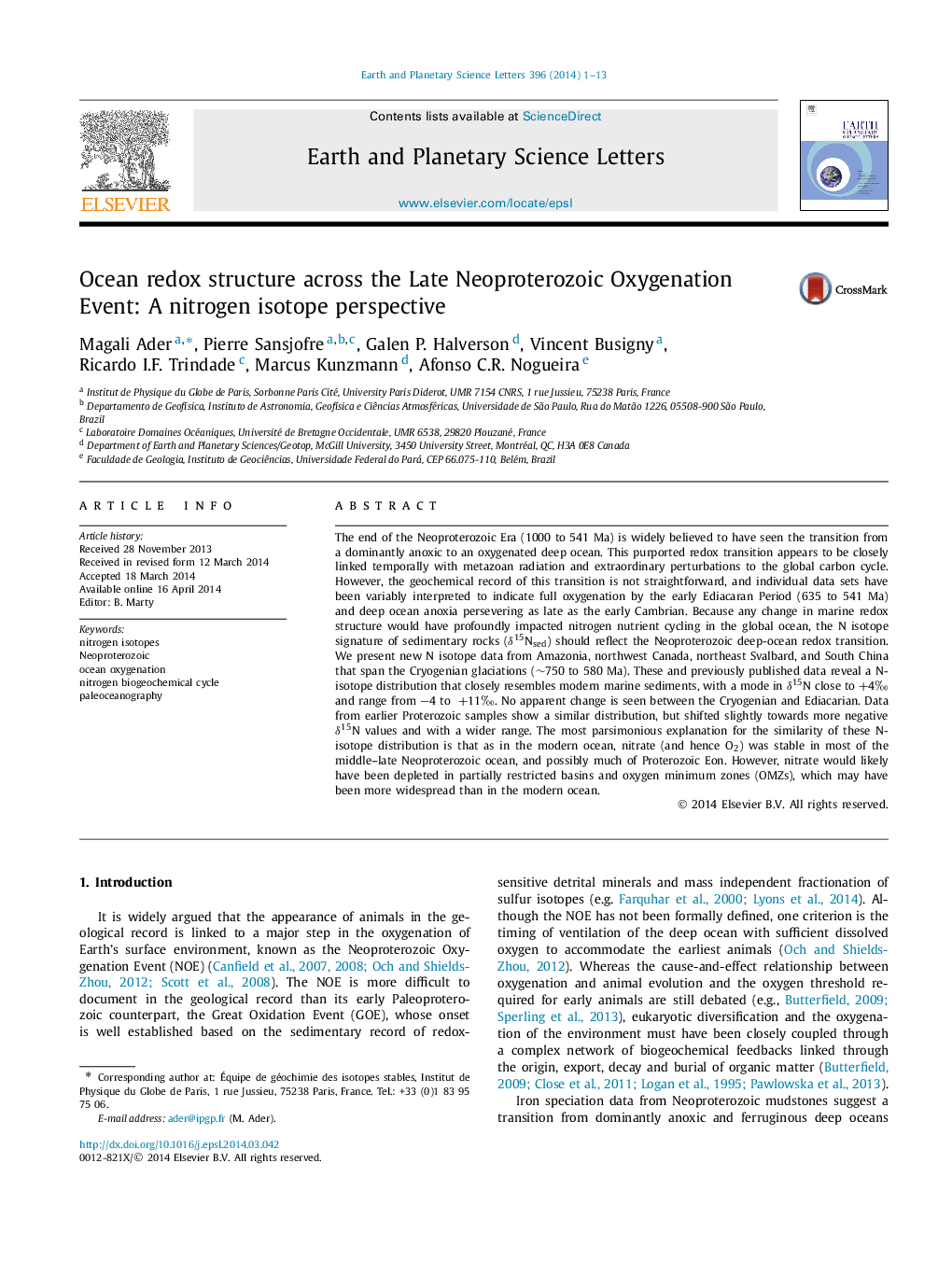| کد مقاله | کد نشریه | سال انتشار | مقاله انگلیسی | نسخه تمام متن |
|---|---|---|---|---|
| 6429525 | 1634760 | 2014 | 13 صفحه PDF | دانلود رایگان |
- New δ15Nsed data for 750-580 Ma old sediments from four Neoproterozoic basins.
- Distribution of 750-580 Ma δ15Nsed data resembles that of modern oceans.
- It is distinct from that of ocean anoxic events.
- This suggests the oceans were pervasively oxygenated by 750 Ma.
The end of the Neoproterozoic Era (1000 to 541 Ma) is widely believed to have seen the transition from a dominantly anoxic to an oxygenated deep ocean. This purported redox transition appears to be closely linked temporally with metazoan radiation and extraordinary perturbations to the global carbon cycle. However, the geochemical record of this transition is not straightforward, and individual data sets have been variably interpreted to indicate full oxygenation by the early Ediacaran Period (635 to 541 Ma) and deep ocean anoxia persevering as late as the early Cambrian. Because any change in marine redox structure would have profoundly impacted nitrogen nutrient cycling in the global ocean, the N isotope signature of sedimentary rocks (δ15Nsed) should reflect the Neoproterozoic deep-ocean redox transition. We present new N isotope data from Amazonia, northwest Canada, northeast Svalbard, and South China that span the Cryogenian glaciations (â¼750 to 580 Ma). These and previously published data reveal a N-isotope distribution that closely resembles modern marine sediments, with a mode in δ15N close to +4â° and range from â4 to +11â°. No apparent change is seen between the Cryogenian and Ediacarian. Data from earlier Proterozoic samples show a similar distribution, but shifted slightly towards more negative δ15N values and with a wider range. The most parsimonious explanation for the similarity of these N-isotope distribution is that as in the modern ocean, nitrate (and hence O2) was stable in most of the middle-late Neoproterozoic ocean, and possibly much of Proterozoic Eon. However, nitrate would likely have been depleted in partially restricted basins and oxygen minimum zones (OMZs), which may have been more widespread than in the modern ocean.
56
Journal: Earth and Planetary Science Letters - Volume 396, 15 June 2014, Pages 1-13
